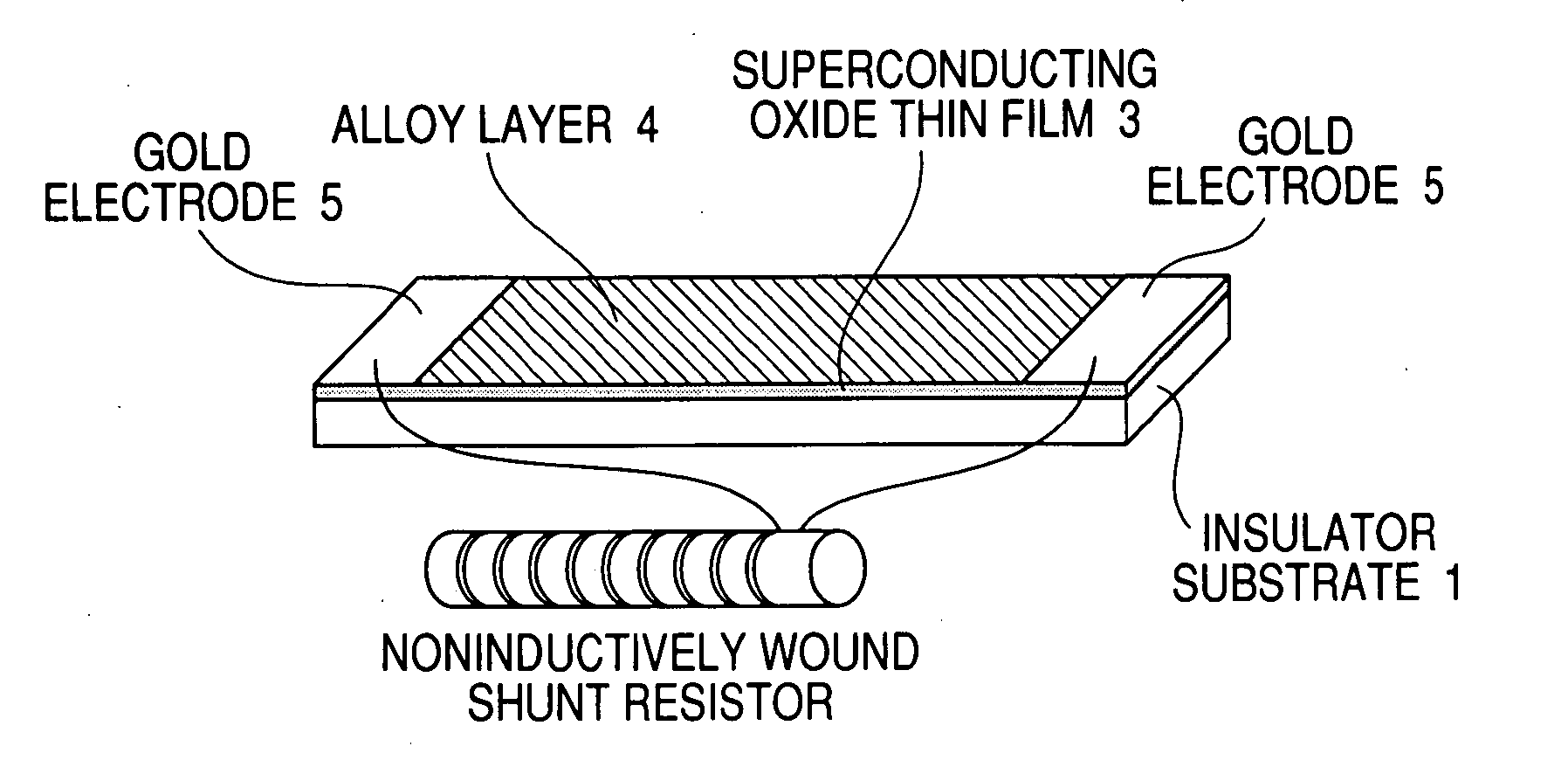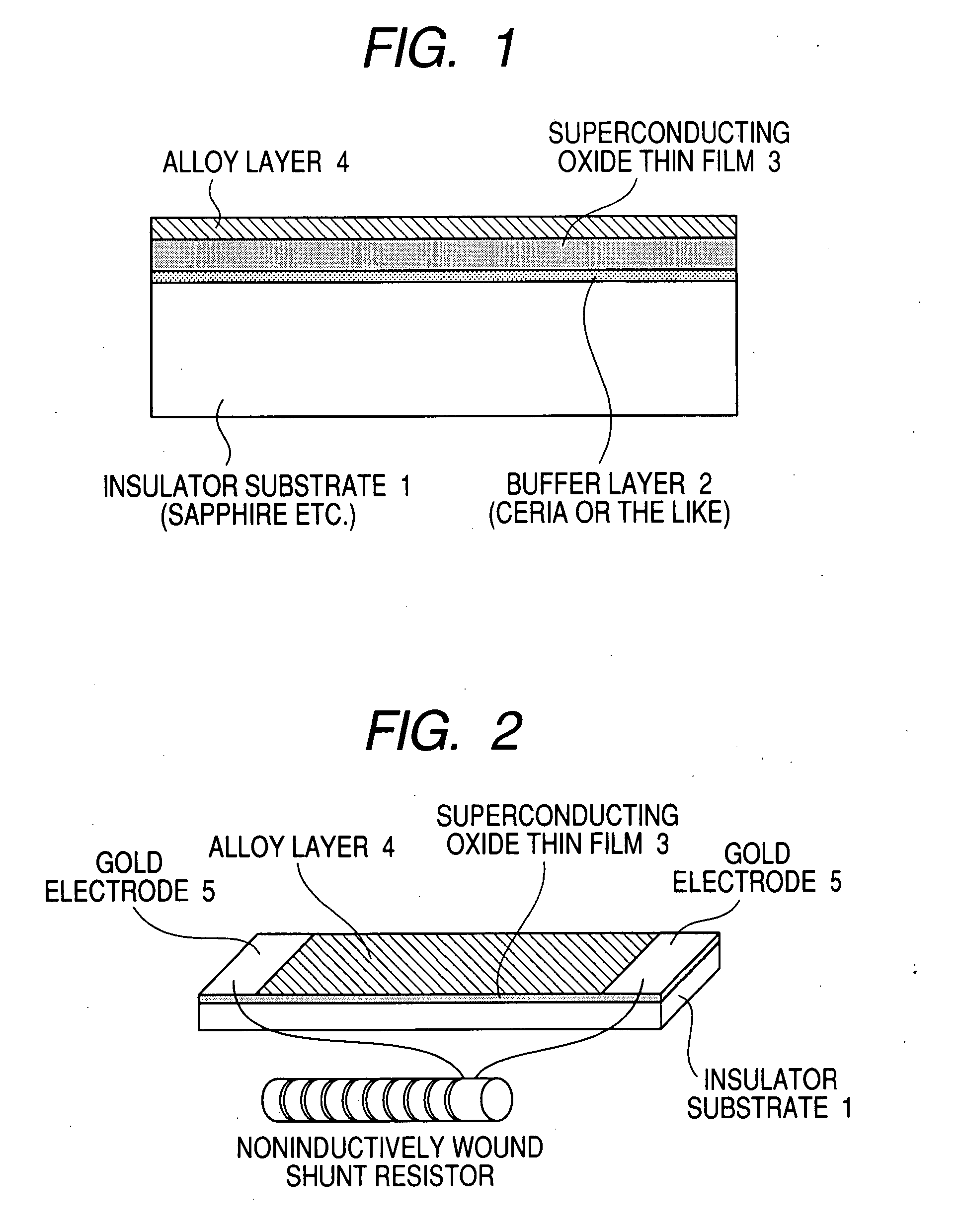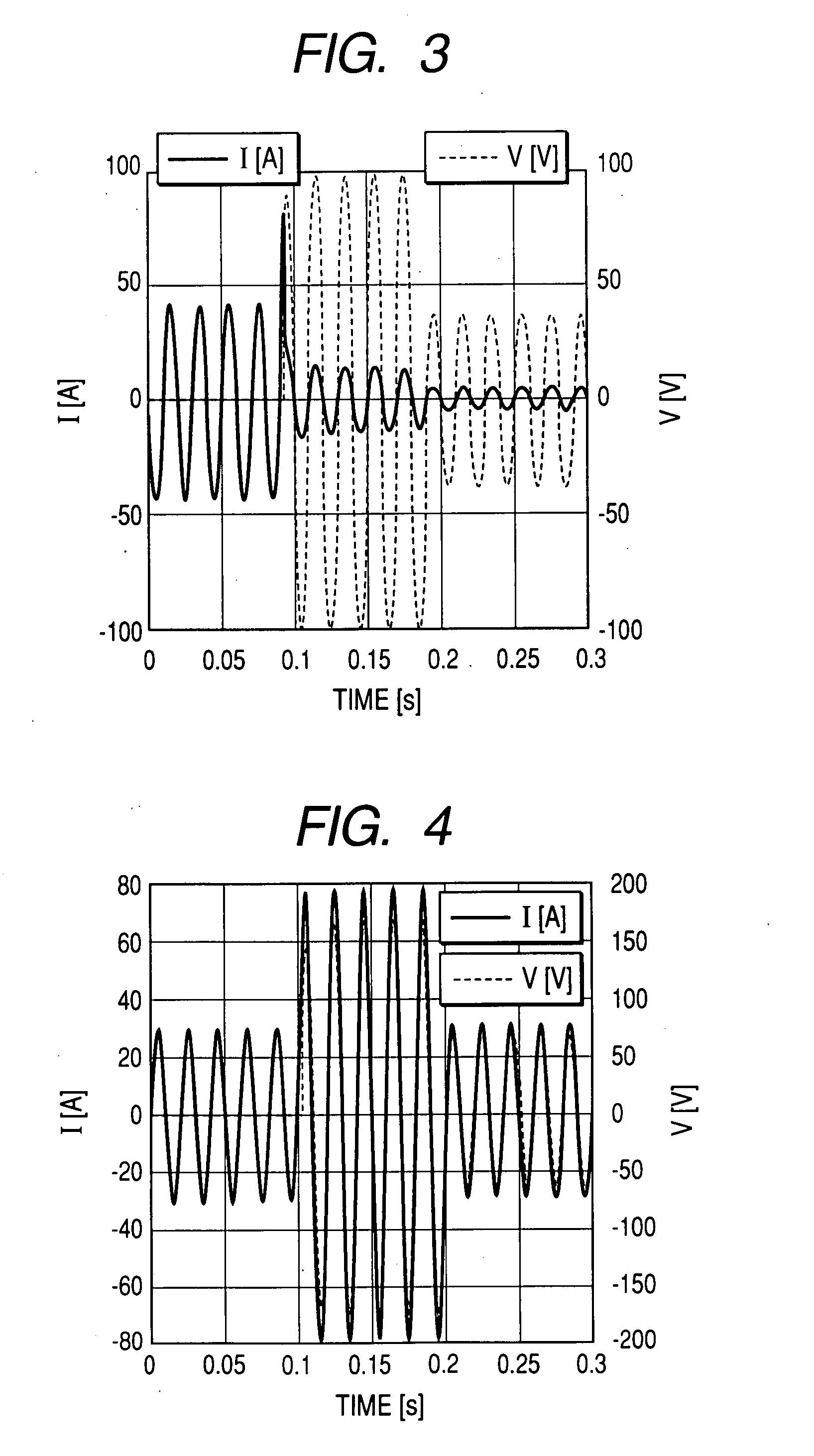Superconducting Fault-Current Limiting Element and the Process for Producing the Same
a technology of fault-current limiting element and superconducting, which is applied in the direction of superconductor device, superconductor/solid-state device details, emergency protective arrangements for limiting excess voltage/current, etc. it can solve the problem of increasing the volume of expensive insulating substrate, increasing the quantity of generated heat, and increasing the fault-current. problem, to achieve the effect of reducing the inductance of an external shunt resistor, reducing the cost and increasing the resistan
- Summary
- Abstract
- Description
- Claims
- Application Information
AI Technical Summary
Benefits of technology
Problems solved by technology
Method used
Image
Examples
Embodiment Construction
[0036] Referring to FIGS. 1 to 4, an explanation will be given with regard to one embodiment of the invention.
[0037]FIG. 1 is a view showing the construction of a superconducting thin-film fault-current limiting element.
[0038] In FIG. 1, reference numeral 1 denotes an insulator substrate of sapphire or the like; 2 denotes a buffer layer of ceria or the like; 3 denotes a large-area superconducting oxide thin film; and 4 denotes an alloy layer having a predetermined film thickness deposited on the superconducting oxide thin film 3.
[0039] The alloy layer 4 may be a binary alloy composed of gold and silver which is stable in the air and does not react with the superconducting oxide thin film 3. When the alloy layer 4 has the composition of gold and silver mixed by 7 to 82 wt % therewith, the resistivity thereof at room temperature is twice or more as large as that of pure gold. Therefore, the alloy layer having such a composition is favorable in construction of the superconducting th...
PUM
| Property | Measurement | Unit |
|---|---|---|
| temperature | aaaaa | aaaaa |
| Fault current limiting properties | aaaaa | aaaaa |
| size | aaaaa | aaaaa |
Abstract
Description
Claims
Application Information
 Login to View More
Login to View More - R&D
- Intellectual Property
- Life Sciences
- Materials
- Tech Scout
- Unparalleled Data Quality
- Higher Quality Content
- 60% Fewer Hallucinations
Browse by: Latest US Patents, China's latest patents, Technical Efficacy Thesaurus, Application Domain, Technology Topic, Popular Technical Reports.
© 2025 PatSnap. All rights reserved.Legal|Privacy policy|Modern Slavery Act Transparency Statement|Sitemap|About US| Contact US: help@patsnap.com



